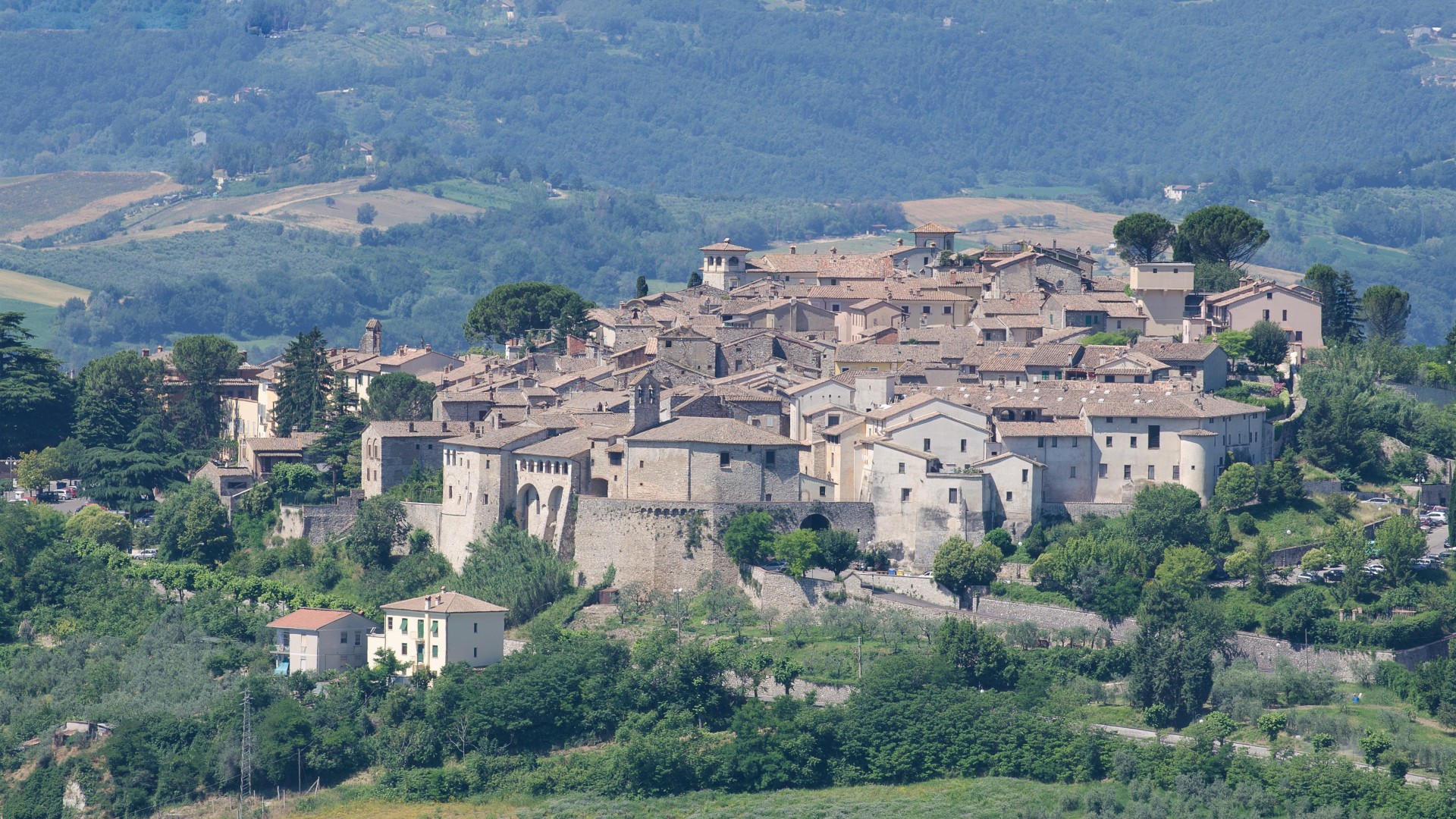San Gemini

The origin of San Gemini is uncertain, but probably connected to the development of the nearby Roman municipium of Carsulae, today an important archaeological site. The village is located near the ancient Via Flaminia. San Gemini could originate from the Roman Casventum mentioned by Pliny the Elder. Certainly the site, where the medieval center would later rise, was not without more ancient settlements, as evidenced by the remains of a Roman domus decorated with mosaic floors in Via del Tribunale, the underground cisterns found in the former monastic complex of St. Caterina or, again, the funerary monument located near the crossroads for Terni and Narni, today called Grotta degli Zingari. According to tradition, the name derives from the Syrian monk Yemin, who lived in the 9th century, a great benefactor of the local population, that the town assumed as its patron saint. The first mention of San Gemini can be found in the foundation deed of the Abbey of St. Nicolò in the year 1036. Since 1889 it has been famous all over the world for its precious mineral waters, particularly suitable for children and the elderly. San Gemini is located at 345 m above sea level and has just under 5,000 inhabitants. Its geographical position, dominating the Ternana Valley, makes it enchantingly panoramic; the excellent dry and sunny climate, its characteristic alleys that open onto palaces, churches and squares and its typical Umbrian cuisine make it particularly attractive for tourists.
For info and to know the events: www.turismosangemini.it